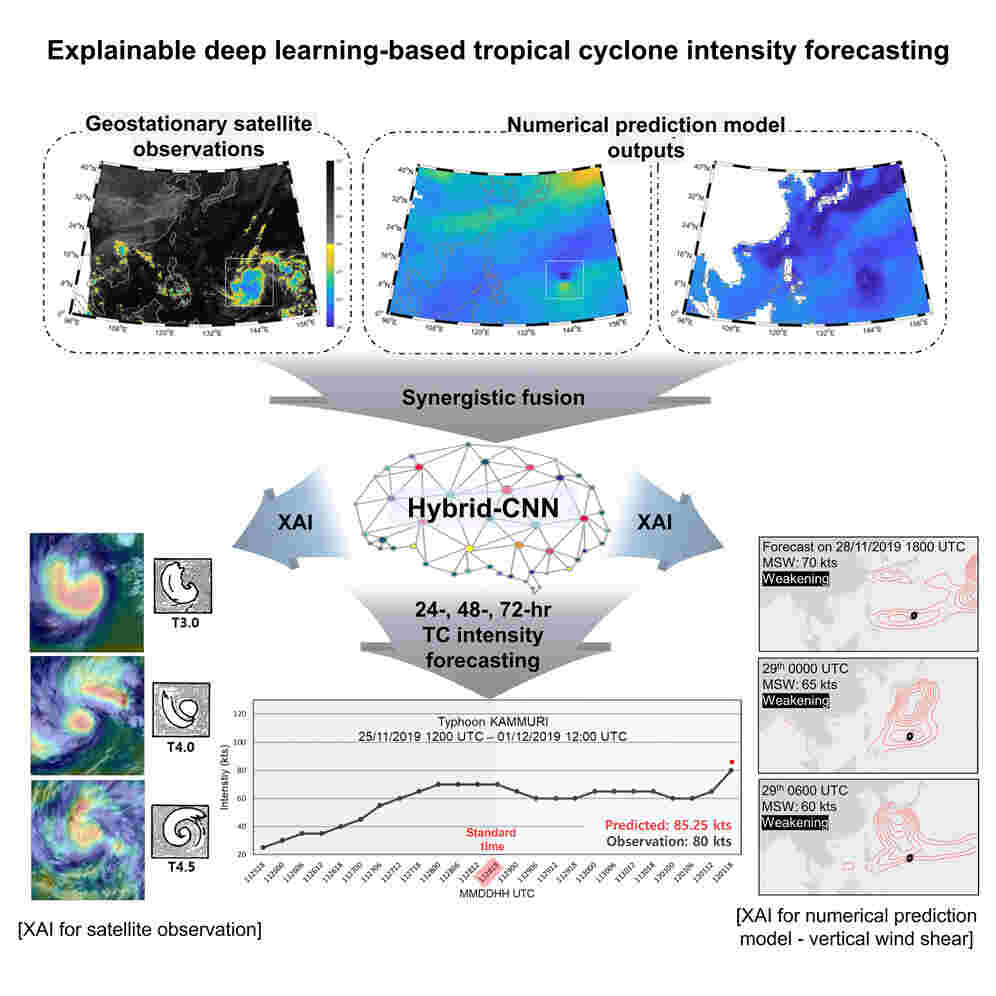THE LATEST
Korean scientists harness deep learning to enhance typhoon forecasting

In response to the increasing challenges posed by climate change, a groundbreaking study has revealed an innovative technology that utilizes real-time satellite data and deep learning to improve the accuracy of typhoon predictions. The research, led by Professor Jungho Im from the Department of Civil, Urban, Earth, and Environmental Engineering at the Ulsan National Institute of Science and Technology (UNIST) in Korea, marks a significant advancement in the field of tropical cyclone forecasting.
Innovative Approach to Typhoon Prediction
In the past, predicting typhoon intensity depended largely on analyzing data from geostationary satellites by meteorologists, which was a time-consuming process with inherent uncertainties related to numerical models. However, the research team at UNIST has developed a revolutionary deep learning-based prediction model called the Hybrid-Convolutional Neural Networks (Hybrid-CNN). This model seamlessly integrates real-time data from geostationary weather satellites with numerical model data. The Hybrid-CNN provides an objective and precise forecast of typhoon intensity with lead times of 24, 48, and 72 hours, significantly reducing the uncertainties associated with traditional numerical models.
Utilization of Transfer Learning and Satellite Data
Through the use of transfer learning techniques, the research team effectively utilized data from the Communication, Ocean, and Meteorological Satellite (COMS) launched in 2010 and the GEO-KOMPSAT-2A (GK2A) launched in 2019. This approach, based on artificial intelligence, visually and quantitatively analyzed the automatic typhoon intensity estimation process, improving the accuracy of typhoon forecasts by identifying and applying key environmental factors that influence changes in typhoon intensity.
Promising Implications for Disaster Preparedness
The advanced technology improves forecasting accuracy and has the potential to revolutionize disaster preparedness efforts by providing prompt and precise typhoon information for developing effective measures. - Professor Im
Conclusion
Combining advanced deep learning technologies with real-time satellite data is a significant leap forward in predicting and mitigating the impacts of typhoons, revolutionizing disaster preparedness and bolstering resilience to unpredictable weather patterns.
